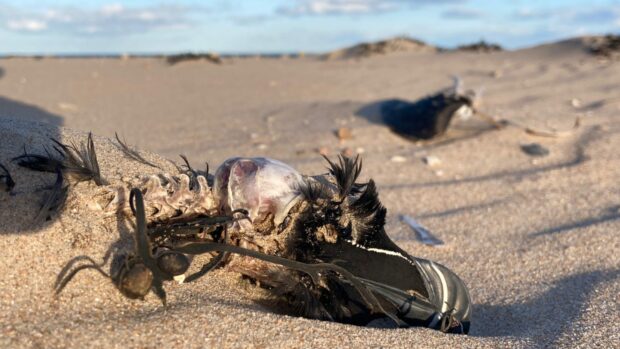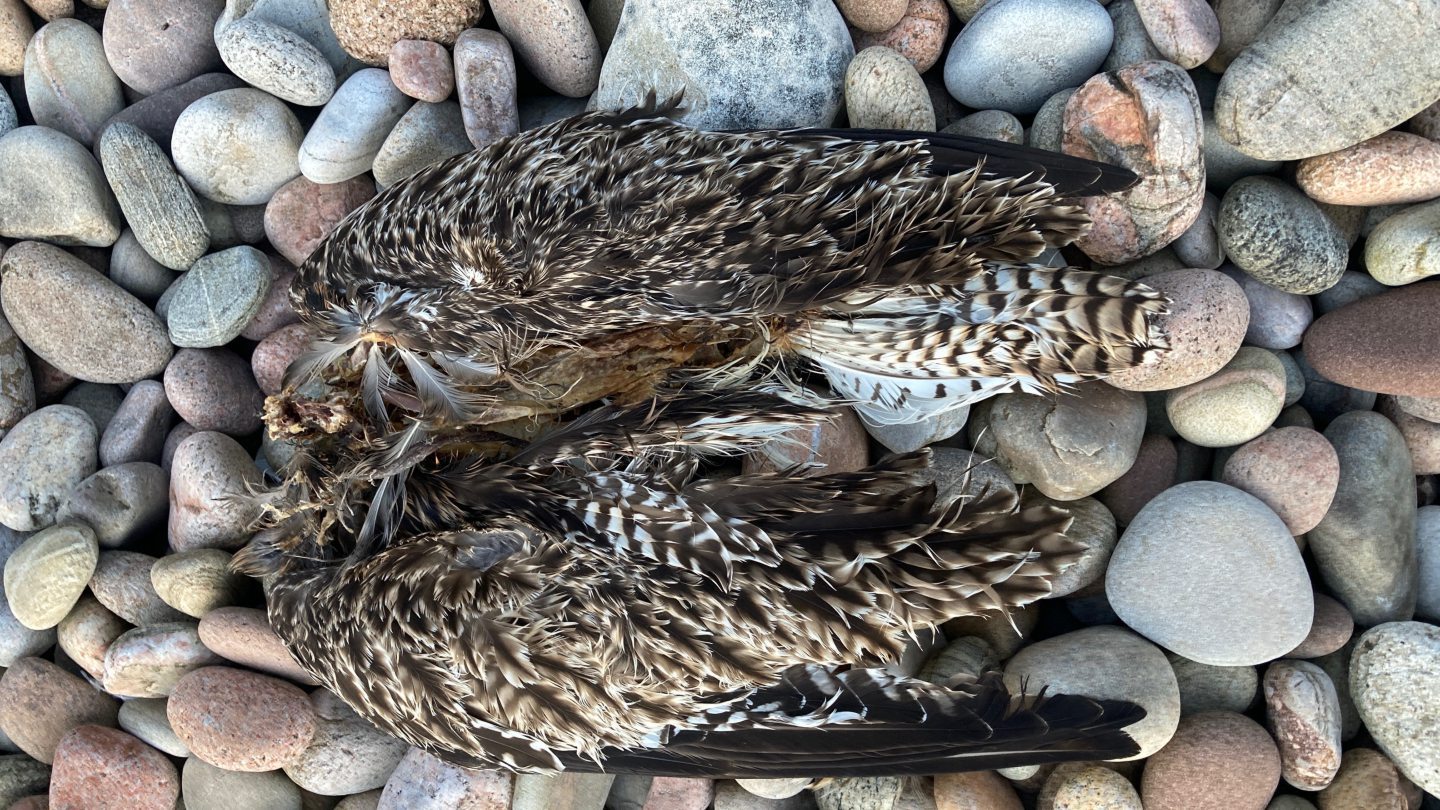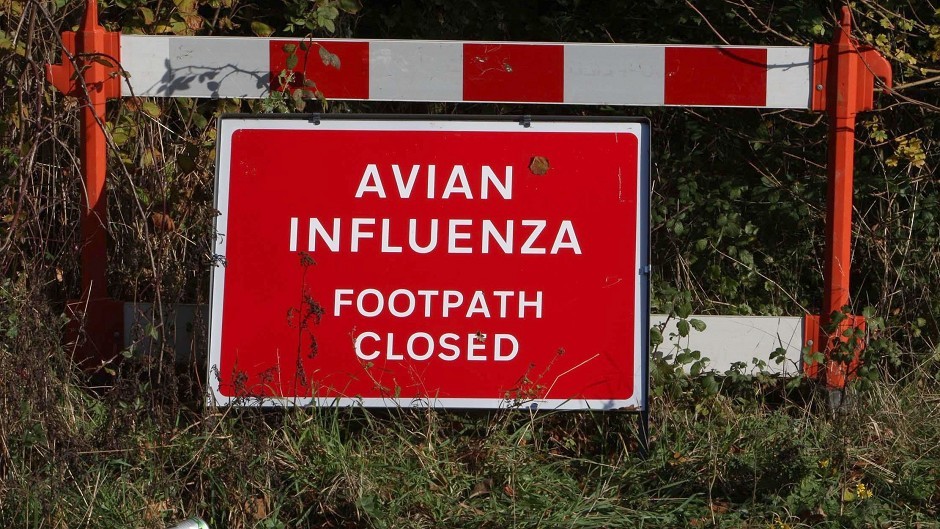More than 70 birds from 17 species have been found dead or dying around a Highland nature reserve, and authorities suspect they contracted bird flu.
Birds of all kinds like pink-footed geese, eider ducks, cormorants, curlews and a puffin have been spotted lifeless or struggling around the shorelines of Littleferry and Loch Fleet, just south of Golspie.
Ecologist Peter Stronach found and catalogued the birds along a half-mile stretch of beach in just one evening.
During a walk this evening I recorded the following dead or dying species on the beach at Littleferry and the nearby shores of Loch Fleet. 72 individuals of 17 species! pic.twitter.com/wAcdAZPiox
— Peter Stronach 🦅🐳🐝🌲 (@macstronach) May 11, 2022
Living birds found ‘diseased and distressed’
“It was grim,” he said.
“I came across a couple of dead male Eiders, and then I found one that wasn’t dead.
“It was trying to fly but it was going in circles in the stones, doing strange head movements – it was obviously diseased and distressed.”
The outbreak in Highland seems to be centred around the large Pink-footed Goose roosts; Loch Fleet, Nigg Bay, Udale Bay and Munlochy Bay. The scale of this outbreak is unprecedented and needs proactive systematic action from DEFRA (affected Eider below) pic.twitter.com/Sp5JtTEvP3
— Peter Stronach 🦅🐳🐝🌲 (@macstronach) May 11, 2022
The Aviemore-based specialist said the discovery brought the nature of the outbreak home to him.
“I hadn’t realised what range of species bird flu was getting into,” he said.
“It’s really scary and it’s hard to know where this is going to end and what effect it’s going to have on our bird population.”
‘We do not know why bird flu is acting differently’
Testing will be needed to confirm the cause but the RSBP is suspecting bird flu.
Robyn Stewart, one of the charity’s species and habitats officers, said the virus is ‘acting differently’.
She explained that a fast-spreading strain of the disease, called Highly Pathogenic Avian Influenza, which wiped out 38% of the Svalbard Barnacle Geese population on the Solway Firth in November, is continuing to spread.
Normally it only affects birds in the winter before petering out.
Robyn said: “To still be seeing the disease and dead birds at the start of breeding season, well that’s something we’ve not seen before and hazarding a guess as to why it is acting differently is difficult.”
The specialist said virologists were doing genetic sequencing to find out why the disease was more virulent.
She said the virus is thought to survive among carcasses, so if you had a gull that came down and scavenged on a bird that had died of bird flu then that bird would potentially be affected.
She added: “I can’t possibly put across how different and complicated this whole thing has been since it started.”
Nature Scot, which manages the Loch Fleet National Nature Reserve, said it is “extremely concerned” about the situation, and staff are on a close watch after cases of suspected bird flu at reserves across Scotland in the north Highlands, Northern Isles, north-east and Loch Leven.
What is the risk to human health?
Very few strains of avian influenza have been recorded as infecting humans.
Robyn said: “As a precaution, we would recommend people do not touch sick or injured or dead birds and they should keep their distance and their dogs should be kept under control, the best thing to do is leave the birds undisturbed and therefore not spreading the virus.”
What can I do?
A spokesman for the Scottish Government said that members of the public are responsible for the safe removal and disposal of dead wild birds if they find them in their own gardens.
And if a wild bird carcass is in a public place like a car park, it is the responsibility of the local council.
But the Scottish Government’s most recent advice for wild bird bodies found on farmland or public beaches is to leave the carcases where they are.
You can report dead wild birds to Defra on 03459 335577.
The UK Government publishes test results weekly which can be a useful way for members of the public to see if there are any cases locally.













Conversation